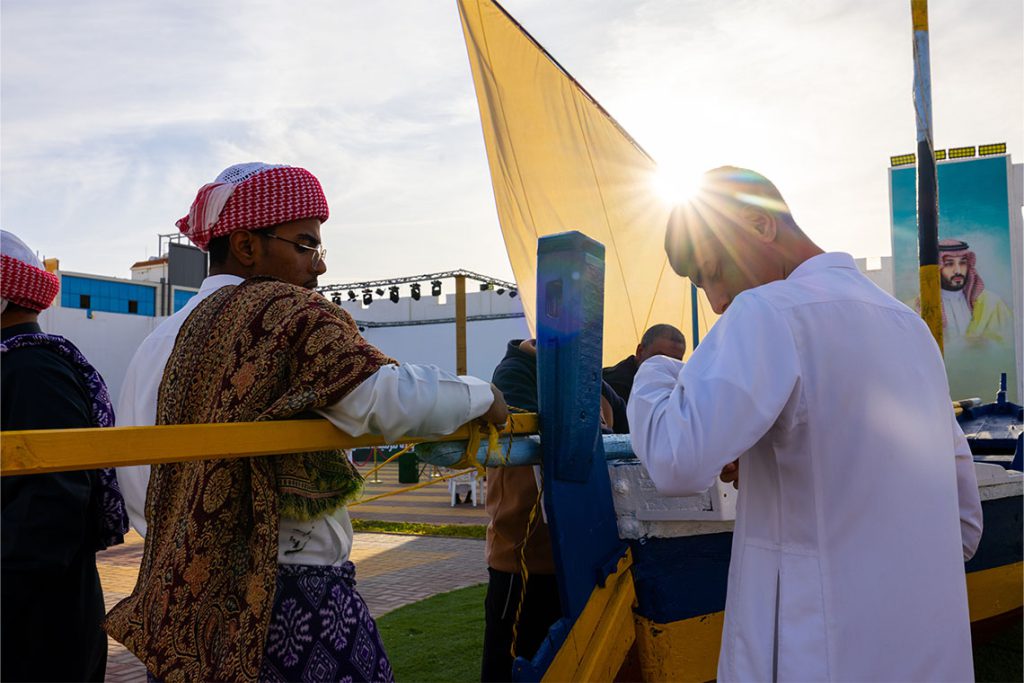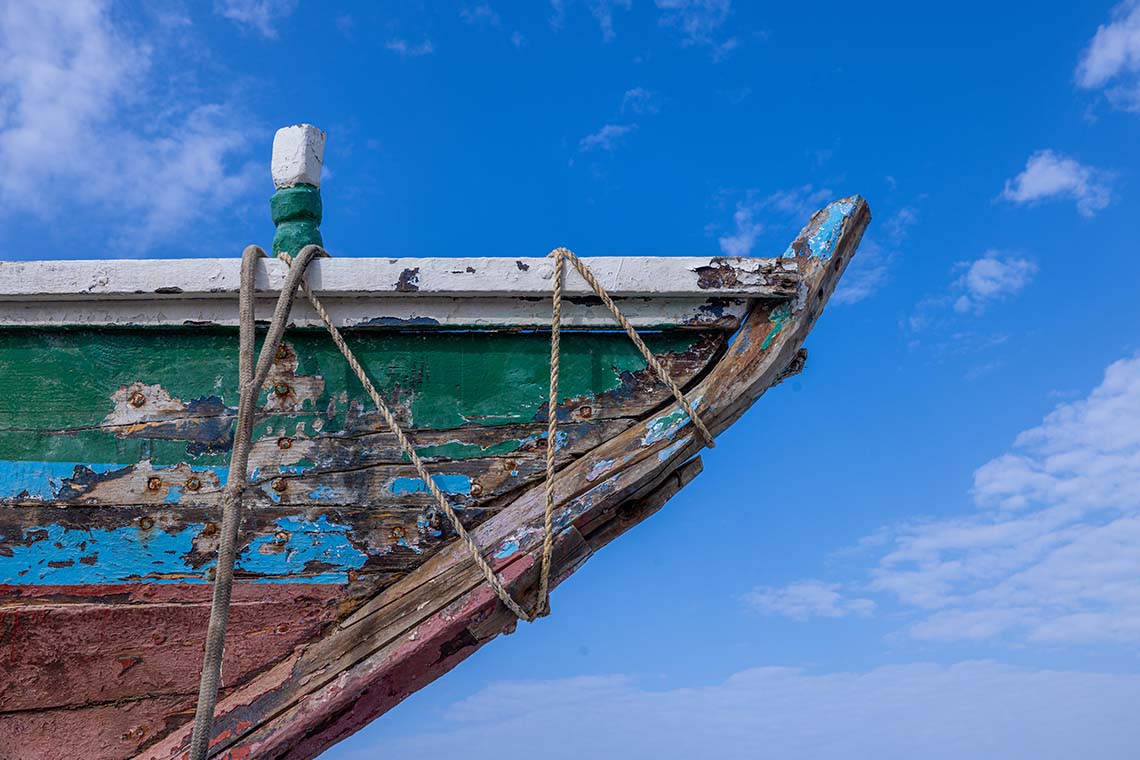Red Sea Global restores traditional sailboats and secures a seafaring heritage.
Reminiscing about the good old days, Ameen Sanosi, the sheikh of the fishermen in Umluj – an island off the Red Sea coast of Saudi Arabia – recounted the stories of his voyages in an interview with the Red Sea Global Social Development team. He recalled how, during their trips, the sailors of the Red Sea faced all sorts of hazards, from misty weather and dangerous coral reefs to unpredictable winds and perilous currents. Thanks to dogged perseverance and their knowledge of the stars, they were able to navigate their way through such hazards, even during the hours of darkness.
The crew had to have full trust in both each other and their vessel. Their boats were made meticulously by skilled and experienced craftsmen who perfected the design of various types of sailboat, each one designed and constructed for a specific purpose. Building these wooden craft is an ancient tradition that is deeply rooted in the history of local Red Sea communities. The sailboats differ in form and function: the sanbuk was a large cargo ship capable of transporting merchandise across the Red Sea and beyond, whereas the zarouk was a more modest craft used mainly for fishing. Smaller boats were used traditionally by local communities for fishing and recreational purposes, including competitive sailing races.
Senior local residents have a deep emotional attachment to these sailboats. With a heavy heart, Ameen Sanosi declared that the main two types, the sanbuk and the zarouk, are history now in Umluj, both replaced by modern vessels. With a faint but hopeful tone in his voice, he mentioned that there were still some small wooden sailboats scattered about but neglected because the yearly cost of maintaining them had become a burden on their owners. Identifying this as an opportunity to make a positive socio-cultural impact that aligns with Red Sea Global sustainability strategy, we took the initiative to restore these imperilled craft.
Bringing back life to the craft of restoring and building these wooden sailboats has sparked a nationwide movement to safeguard the unique intangible cultural heritage of the Red Sea. The National Commission for Education, Science and Culture mobilised their resources to focus on documenting the rich cultural heritage of the Red Sea in alignment with relevant Cultural Commissions and UNESCO. We found 13 traditional wooden sailboats in Umluj and decided to restore all of them. The ambitious project started with our team leading the way and partnering with government entities, local NGOs, the private sector, sailboat owners and the craftsmen. The aim was to take advantage of the restored sailboats to create sustainable socio-economic opportunities for local people through the operation of culturally rich sailing experiences and the running of water taxis between the islands for visitors from elsewhere in the Kingdom and beyond.

The first meeting with the local sailboat owners was unforgettable. The excitement shown by the senior sailboat owners for the project’s profound cultural impact was indescribable. The craftsmen were ecstatic about not only restoring the sailboats, but also transferring their knowledge to the local youth as a way of sustaining the craft within the community. The sailboats were conveyed from backyards to Umluj sea port in a pre-restoration process designed to assess the extent of damage to the wooden bodywork and gauge the likely amount of repair required. After a week, the sailboats were transported to local workshops to start the restoration phase. After the assessment, two sailboats out of the 13 were deemed too damaged to be worth repairing, so the craftsmen decided to build two new ones that could be used for training purposes.
The remaining 11 sailboats were taken through the traditional stages of careful restoration by the craftsmen, as follows:
1. Loading the boats on trailers and taking them to the sea, where they were immersed in water for 7–10 days
2. Dewatering the immersed boats in order to identify the damaged sections in the wood and cotton sailcloth
3. Identifying soft spots requiring attention
4. Taking the boats out of the sea and transporting them back to the workshop
5. Carrying out renovation and repair works, including replacing wood, cotton sailcloth and caulking
6. Adding an insulating and reinforcing material to protect the wood
7. Furnishing the interior of each boat
8. Ensuring the safety of the boats’ different elements, including the mast and steering equipment
9. Ensuring the safety of the sail by repairing or replacing it if necessary
10. Colour painting the exteriors of the boats using scratchproof paint
11. Returning the boats to the sea and immersing them in the water for 5–7 days
12. Dewatering the boats and then adding safety equipment and ballast, as well as installing the sails in preparation for delivery of the restored vessels.
In January 2024, following completion of all the various processes of repair, each restored group of sailboats was exhibited at a weekly public cultural event in Umluj’s Souq Amerah to mark the incredible work carried out by the craftsmen. In a joyful atmosphere, visitors not only celebrated the restored sailboats, but were also able to enjoy traditional sailor culture in the Umluj community in the form of music, traditional dances, food and crafts.



